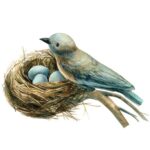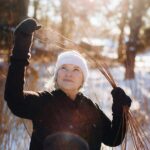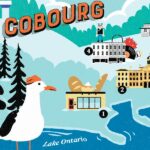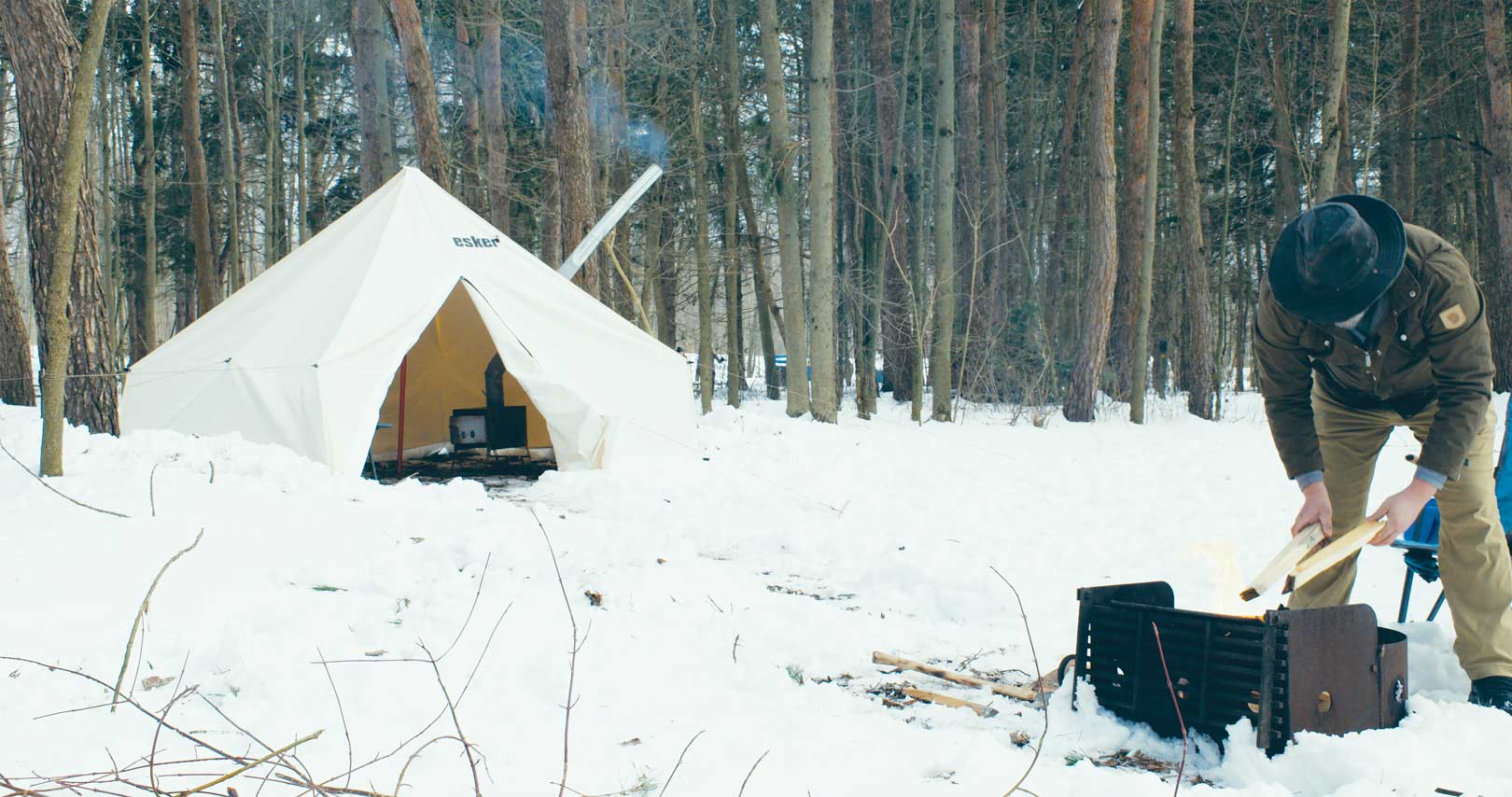
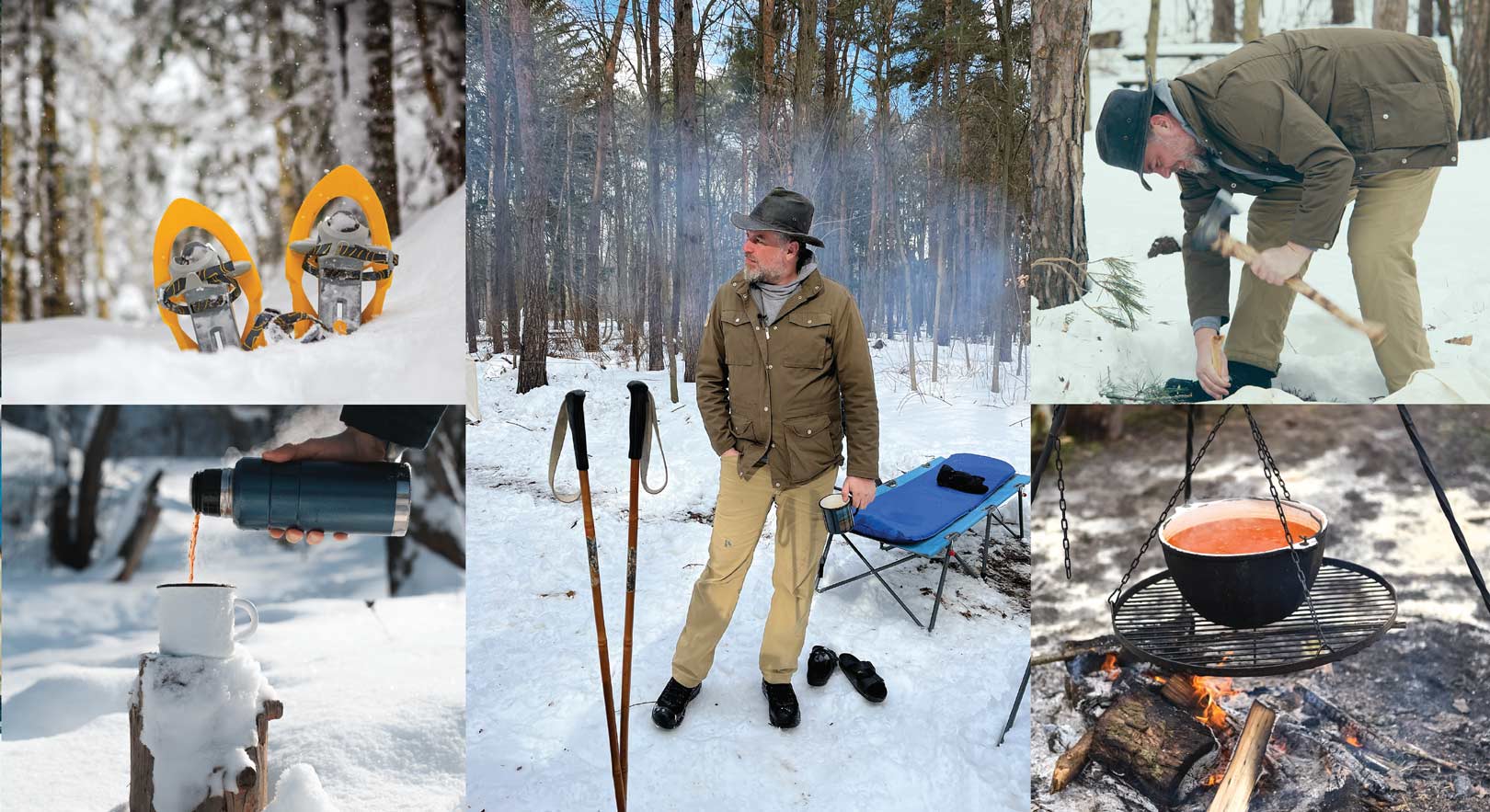
A winter outing can be a magical experience. Quiet contact with nature makes the effort worthwhile and takes the chill away.
Andrew Twigg’s eyes and heart were opened to the wonders of winter by his Norwegian grandfather, who would pick him up every Sunday in his blue Ford E250 cargo van with vinyl seats and roll-down windows, and they would head off for an outdoor adventure with their cross country skiing gear rattling in the back.
Later, as the two of them skied through the forest, Andrew would feel the rush of cold air in his lungs and follow the animal tracks in the snow. With his grandfather as his guide, he learned that even in the depths of winter the woods were teeming with life.
While Andrew had a charmed upbringing with nature-loving grandparents, his family life was rocked by two major losses: When he was 18, his grandfather had a catastrophic accident. A few years later his 14-year-old brother was killed. Andrew turned to nature to help him heal his suffocating grief. It was there, over time, that he learned to see the profound beauty in the world again.
Decades later, being in nature – especially during winter – gives him respite, even freedom, when the world gets too loud.
“I live inside my head, I think that’s the best way to say it,” says Andrew. “And when I get outside … chopping wood, setting up a tent, getting a fire going, I put away my thoughts. I don’t have anything in my head other than the task I’m doing.”
For Andrew, there’s something unique, even magical, about winter camping: each breath feels crisper, the light brighter, the air saturated with the scents of pine and woodsmoke. In the hush of the forest, every branch-snap, chickadee call or footstep is amplified, and the crackle of the fire soothes the jangled nerves of modern living.
For 10 years, he guided groups into the snowy wilderness through his company, Cruising Canoes. With his van full of passengers he’d head up to Silent Lake Provincial Park. There, they’d load up the toboggans with the stoves, tents, food and cooking gear, strap on their snowshoes and hike to their campsite in the woods.
“Everybody had a job to do. Everybody had to lean in,” says Andrew. “And they quickly realized that winter isn’t that bad if you’re moving around.” “I would take people for a night snowshoe with headlamps. We’d go out onto the lake and admire the dark sky and the stars.”
This winter Andrew will begin leading winter camping expeditions once again, after a hiatus brought about during the pandemic.
Arguably there are practical benefits to winter camping. Anyone who’s ever experienced the great outdoors in July knows they’ll be sharing their campground with crowds of other campers – and swarms of mosquitoes and blackflies. But during the winter, there are no biting bugs and you’re more likely to run across the local wildlife than another camper.
Then there’s the challenge. Our lives are pretty comfortable, with thermostat-controlled heating that insulates us from winter discomfort. But perhaps there’s something instinctual that gets stirred up in our reptilian brains when we’re winter camping: there’s a real need to survive when there’s little between us and the elements.
Winter camping is serious business. The nights are long, especially when you’re faced with sub-zero temperatures that feel even worse when you’re wet, cold or hungry. So it’s important to plan and pack appropriately.
WHAT TO BRING
The number one question Andrew gets asked by people new to the winter camping experience is, “Am I going to get cold?”
There are different levels of winter camping gear to suit all campers. Not everyone sleeps in a quinzhee, a snow shelter similar to an igloo.
For most weekend winter warriors, hot camping offers the best level of comfort. “I’m not too much into suffering anymore. I like luxury,” says Andrew, who favours his hot tent setup. “I have a nice cot, a lightweight stove and a tent.”
A hot tent, typically made of canvas, is designed to accommodate a wood-burning stove inside, allowing you to keep warm, cook and even dry your clothes. Rather than admitting the damp and the cold, a hot tent offers a toasty sanctuary from the elements. However, hot tenting is expensive, and the gear is much bulkier than cold camping. You’ll need a sled and snowshoes or cross-country skis to haul your gear to your campsite.
On the other end of the spectrum, cold camping looks a lot like summer camping, except the gear is heavier duty. It requires a four-season tent, a winter-rated sleeping bag, an insulated sleeping pad and a cooking stove with fuel that won’t freeze, such as white gas or kerosene. The benefit of cold camping is the convenience and the weight of the gear compared to hot camping equipment. The gear can pack up compactly, making it easier to travel over rugged terrain or trails.
Nylon tents aren’t fireproof, and keeping warm and dry is challenging without an external heat source. You’ll need to bundle in your sleeping bag with lots of layers while managing moisture buildup due to condensation and sweat. However, if you currently own three-season camping gear, you can modify what you have (add a tarp over your tent and a liner to your sleeping bag) to get a taste of winter camping without any significant investment.
WHAT TO WEAR
“There’s no such thing as a bad camping trip, just bad gear,” says Andrew.
With summer camping, if you bring the wrong clothing you’ll be miserable, but you can tough it out through the night. With winter camping, you run the risk of hypothermia or even frostbite. Dressing in layers is the best way to keep from getting cold. The best materials for winter camping are wool and moisture-wicking synthetics; leave the cotton at home. Think base layers, fleecy mid-layers and a windproof shell for both your upper body and legs. Be sure to invest in quality socks, gloves, boots and hats, and bring a second set of clothes to wear in camp, including an insulated jacket.
“Once you get wet, if you don’t have dry clothes to change into, you’re going to be uncomfortable and miserable,” says Andrew.
WHAT TO EAT
You’re going to be using a lot of energy, especially if you’re snowshoeing to your campsite, so pack lots of calorie-dense, high-protein snacks and meals. Foods that take longer to digest can help raise your body temperature and keep you warmer, a process called thermogenesis. Packaged freeze-dried meals are easy if you’re cold camping, as you just add boiling water.
Hot campers have more options since they’re not limited by pack size or weight. Andrew’s favourite camping meal is chili – and hot toddies around the campfire.
And don’t forget to drink lots of water as it’s easy to get dehydrated in the winter.
WHERE TO GO
If you live in an urban environment, the experience of winter is often one of slush, grey skies and inconvenience. But just beyond the town line, a winter wonderland awaits.
“We’re definitely a winter destination,” says Andrew. “We have a good snow-belt, so we have snow most of the winter. We have lots of Crown land and parks, and lots of places where you can go, strap on your snowshoes or skis and take in nature.” There are generally two options for winter camping: front-country camping, where you drive to your spot (or have easier access to your car), and backcountry camping, where you travel by skis or snowshoes to your campsite.
And in the Watershed region there are numerous places to explore.
Provincial and national parks: Fifteen provincial parks offer winter camping, ranging from trailer and tent camping to backcountry camping. Most parks offering overnight stays in the winter also feature heated comfort stations with running hot water, flush toilets and showers. Some non-operating parks (without staff or facilities) list camping as a permitted activity. Check the Ontario Parks online locator for locations.
Conservation areas and municipal sites: Ontario has over 300 conservation areas. Visit Conservation Ontario online to search by location and activity. Crown land: Approximately 87% of Ontario is registered as Crown land, also known as public land. There are no designated sites or facilities, and camping is allowed for free for up to 21 days. You can use the interactive map on the Crown Land Use Policy Atlas to find Crown land locations and permitted activities.
Private land: If you’re not quite ready for the backcountry but you want to find your own snowy wilderness, the online reservation system Hipcamp (dubbed the Airbnb for the outdoors) helps you find and book stays on private land.
AT THE END OF THE DAY
“In the winter, we spend a lot of time indoors. We get cooped up, and we’re not getting our vitamin D,” says Andrew. The shorter days and less light can lead to the winter blues, or worse, seasonal affective disorder (SAD). “Winter camping offers an escape from being inside. And after a weekend outside, you just feel better.”
Winter camping doesn’t need to be intimidating. It opens up a world of new experiences and adventure. It’s a world that Andrew has been sharing with his son since he was two years old. While it takes a lot of planning, careful preparation and packing, there’s the satisfaction of a big reward at the end of the day: a roaring fire, a toasty sleeping bag and a deep sleep under the stars.
Story by:
Fiona Campbell
Photography by:
Victor Cooper

